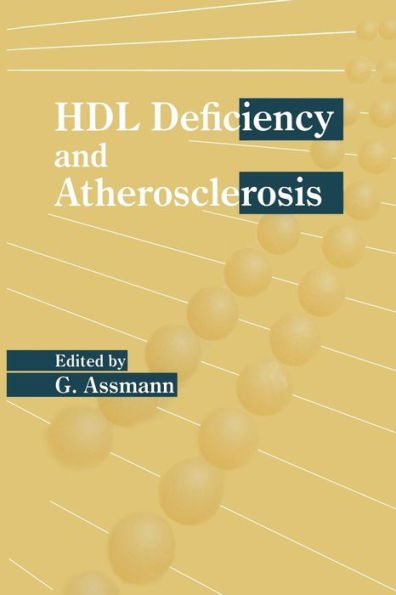Home
Diabetes Insipidus: Vasopressin Deficiency and Resistance Explained
Barnes and Noble
Loading Inventory...
Diabetes Insipidus: Vasopressin Deficiency and Resistance Explained in Franklin, TN
Current price: $19.99

Barnes and Noble
Diabetes Insipidus: Vasopressin Deficiency and Resistance Explained in Franklin, TN
Current price: $19.99
Loading Inventory...
Size: OS
This book presents an overview of diabetes insipidus and represents Lewis Blevins' thoughts, understanding, and personal reflections on a career of evaluating and treating numerous patients with the disorder. In this book, you'll find Blevins' opinions about diagnostic testing and management approaches. He shares patient stories and discusses his findings, as well as patient voices collected from surveys conducted at Pituitary World News.
The first patient Blevins encountered with diabetes insipidus was a young woman with neurosarcoidosis in 1988. The most recent patient is a middle-aged man with a history of head trauma, evaluated in April 2024. Blevins has seen and learned a great deal over the years, with much more to explore. His hope is that readers will gain new insights from this book. He does not offer formal recommendations or direct guidance for patients, but rather expresses his personal opinions.
Blevins has grappled with whether to use the terms vasopressin deficiency or resistance in place of diabetes insipidus throughout the book. He believes diabetes insipidus is an excellent catch-all term, prevalent in medical literature. Though it may not be the best term for patients, it has been widely used for a long time, describing the clinical syndrome of passing large amounts of tasteless urine. The newer terms describe the underlying pathophysiology. Blevins does not have much hope for doctors' familiarity with this disorder, given its extreme rarity with a prevalence of approximately one in 25,000 persons. Most physicians have not seen a patient with this condition and likely never will. Blevins had the fortune of encountering two cases during his residency and numerous others since his fellowship, where he focused on pituitary disorders.
Despite agreeing that the name should be changed, Blevins suspects that diabetes insipidus will remain in use for some time, at least for his generation and a few generations to come. However, he has started referring to vasopressin deficiency along with diabetes insipidus when teaching about this condition. He believes it will take a while for this movement to gain momentum, but encourages patients to educate their healthcare providers with passion, regardless of the terminology. By doing so, they can make a positive difference in the world.
The first patient Blevins encountered with diabetes insipidus was a young woman with neurosarcoidosis in 1988. The most recent patient is a middle-aged man with a history of head trauma, evaluated in April 2024. Blevins has seen and learned a great deal over the years, with much more to explore. His hope is that readers will gain new insights from this book. He does not offer formal recommendations or direct guidance for patients, but rather expresses his personal opinions.
Blevins has grappled with whether to use the terms vasopressin deficiency or resistance in place of diabetes insipidus throughout the book. He believes diabetes insipidus is an excellent catch-all term, prevalent in medical literature. Though it may not be the best term for patients, it has been widely used for a long time, describing the clinical syndrome of passing large amounts of tasteless urine. The newer terms describe the underlying pathophysiology. Blevins does not have much hope for doctors' familiarity with this disorder, given its extreme rarity with a prevalence of approximately one in 25,000 persons. Most physicians have not seen a patient with this condition and likely never will. Blevins had the fortune of encountering two cases during his residency and numerous others since his fellowship, where he focused on pituitary disorders.
Despite agreeing that the name should be changed, Blevins suspects that diabetes insipidus will remain in use for some time, at least for his generation and a few generations to come. However, he has started referring to vasopressin deficiency along with diabetes insipidus when teaching about this condition. He believes it will take a while for this movement to gain momentum, but encourages patients to educate their healthcare providers with passion, regardless of the terminology. By doing so, they can make a positive difference in the world.
This book presents an overview of diabetes insipidus and represents Lewis Blevins' thoughts, understanding, and personal reflections on a career of evaluating and treating numerous patients with the disorder. In this book, you'll find Blevins' opinions about diagnostic testing and management approaches. He shares patient stories and discusses his findings, as well as patient voices collected from surveys conducted at Pituitary World News.
The first patient Blevins encountered with diabetes insipidus was a young woman with neurosarcoidosis in 1988. The most recent patient is a middle-aged man with a history of head trauma, evaluated in April 2024. Blevins has seen and learned a great deal over the years, with much more to explore. His hope is that readers will gain new insights from this book. He does not offer formal recommendations or direct guidance for patients, but rather expresses his personal opinions.
Blevins has grappled with whether to use the terms vasopressin deficiency or resistance in place of diabetes insipidus throughout the book. He believes diabetes insipidus is an excellent catch-all term, prevalent in medical literature. Though it may not be the best term for patients, it has been widely used for a long time, describing the clinical syndrome of passing large amounts of tasteless urine. The newer terms describe the underlying pathophysiology. Blevins does not have much hope for doctors' familiarity with this disorder, given its extreme rarity with a prevalence of approximately one in 25,000 persons. Most physicians have not seen a patient with this condition and likely never will. Blevins had the fortune of encountering two cases during his residency and numerous others since his fellowship, where he focused on pituitary disorders.
Despite agreeing that the name should be changed, Blevins suspects that diabetes insipidus will remain in use for some time, at least for his generation and a few generations to come. However, he has started referring to vasopressin deficiency along with diabetes insipidus when teaching about this condition. He believes it will take a while for this movement to gain momentum, but encourages patients to educate their healthcare providers with passion, regardless of the terminology. By doing so, they can make a positive difference in the world.
The first patient Blevins encountered with diabetes insipidus was a young woman with neurosarcoidosis in 1988. The most recent patient is a middle-aged man with a history of head trauma, evaluated in April 2024. Blevins has seen and learned a great deal over the years, with much more to explore. His hope is that readers will gain new insights from this book. He does not offer formal recommendations or direct guidance for patients, but rather expresses his personal opinions.
Blevins has grappled with whether to use the terms vasopressin deficiency or resistance in place of diabetes insipidus throughout the book. He believes diabetes insipidus is an excellent catch-all term, prevalent in medical literature. Though it may not be the best term for patients, it has been widely used for a long time, describing the clinical syndrome of passing large amounts of tasteless urine. The newer terms describe the underlying pathophysiology. Blevins does not have much hope for doctors' familiarity with this disorder, given its extreme rarity with a prevalence of approximately one in 25,000 persons. Most physicians have not seen a patient with this condition and likely never will. Blevins had the fortune of encountering two cases during his residency and numerous others since his fellowship, where he focused on pituitary disorders.
Despite agreeing that the name should be changed, Blevins suspects that diabetes insipidus will remain in use for some time, at least for his generation and a few generations to come. However, he has started referring to vasopressin deficiency along with diabetes insipidus when teaching about this condition. He believes it will take a while for this movement to gain momentum, but encourages patients to educate their healthcare providers with passion, regardless of the terminology. By doing so, they can make a positive difference in the world.

















